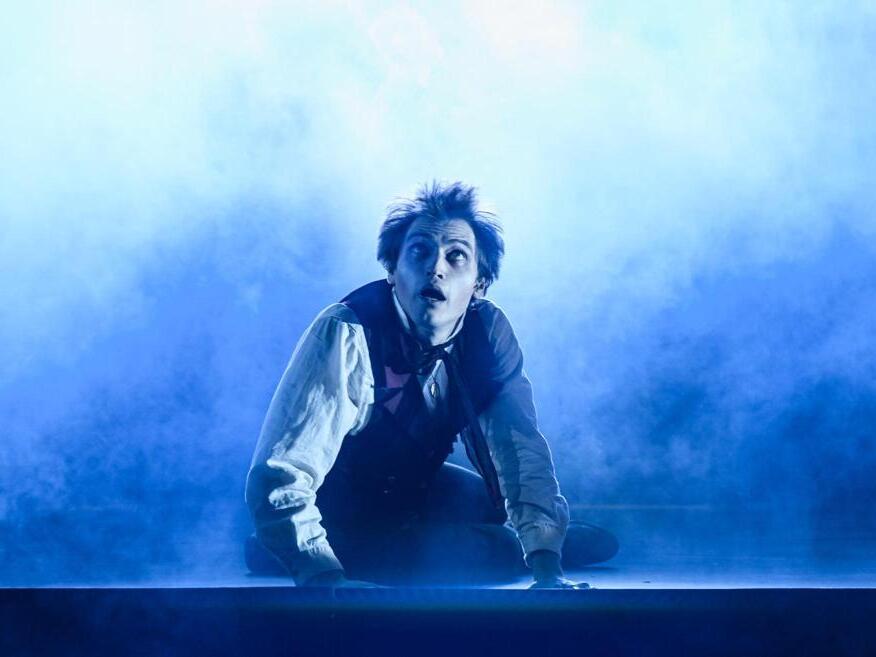Physical Address
304 North Cardinal St.
Dorchester Center, MA 02124
Physical Address
304 North Cardinal St.
Dorchester Center, MA 02124

Mary Shelley’s “Frankenstein” has seen countless adaptations, from its original epistolary format in 1818 to modern cinematic takes like Yorgos Lanthimos’s “Poor Things.” Over two centuries, this gothic tale of a scientist grappling with his monstrous creation has captivated readers, provoking deep questions about ethics, isolation, and the nature of humanity. Today, parallels to artificial intelligence are apparent, while themes of toxic masculinity and “incel” resentment also resonate.
The most recent stage adaptation by independent theatre company Shake and Stir, premiered in Brisbane last year, is a standout addition to the Frankenstein canon. Directed by Nick Skubij and adapted by Nelle Lee, the production remains faithful to the original text, smartly employing technology to emphasize the Industrial Revolution backdrop and the simultaneous social decay.
This adaptation immediately immerses the audience with a thick layer of smoke covering the stage. Classical music pieces, from Erik Satie’s Gnossiennes to Claude Debussy’s Clair de Lune, enhance the ominous atmosphere. However, silence is also used to great effect, amplifying suspense—a key element in horror narratives. Josh McIntosh’s grandiose set design features stage pieces that emerge from the dark, including a large ship. The digital backdrop across multiple screens transports viewers from a university library to a labyrinthine forest, enhancing the emotional depth of the scenes, reminiscent of Kip Williams’ praised “The Picture of Dorian Gray.”
Darcy Brown portrays Victor Frankenstein with a certain bumbling charm, effectively capturing the scientist’s descent into madness. The pivotal scene where the creature, played by Jeremiah Wray, comes to life is especially striking, using pyrotechnics to create an electrifying atmosphere. The sensory assault includes flashing lights and a chemical smell that permeates the room. Wray’s performance as the newborn creature, jerking and contorting like an animal learning to walk, is masterful. His physical transformation and the development of an inner life filled with anger are compelling. The creature’s appearance is hidden until the second act, with Steven Boyle’s prosthetic makeup design bringing Wray’s expressive face to a frightening life.
The themes of isolation and torment are poignantly explored by Brown and Wray, supported by a versatile cast that rotates through various roles via a clever stage mechanism. The creature is shown as both pitiable and loathsome. His need for community and affection is palpable in touching sequences, such as when he helps a family through the changing seasons. Yet, his escalating violence is both horrifying and tragic, painting a complex picture of his character. Wray manages to seamlessly transition between these conflicting modes, drawing comparisons to Ralph Fiennes’ portrayal of Voldemort—merciless yet eloquently chilling.
Chloé Zuel, as Frankenstein’s bride Elizabeth, brings depth and warmth to the narrative in a climactic scene. Zuel’s portrayal of Elizabeth is fiery and compassionate, particularly in her interactions with the creature, albeit ultimately futile.
The production’s design intensifies the claustrophobic guilt experienced by Frankenstein. Screens displaying pages of handwriting symbolize the scientist’s obsessive plotting. In another effective scene, shadows play a crucial role as Frankenstein stands haunted by his creation, even on his wedding night.
All these elements contribute to a production rich in both style and substance, creating a pervasive sense of dread and despair. Occasional moments of humor offer brief relief, but the show generally remains relentless. It plunges the audience into Frankenstein’s twisted world, forcing a brutal contemplation of themes that are even more horrifyingly relevant today, as the boundaries between human and machine continue to blur.
Source: The Guardian



